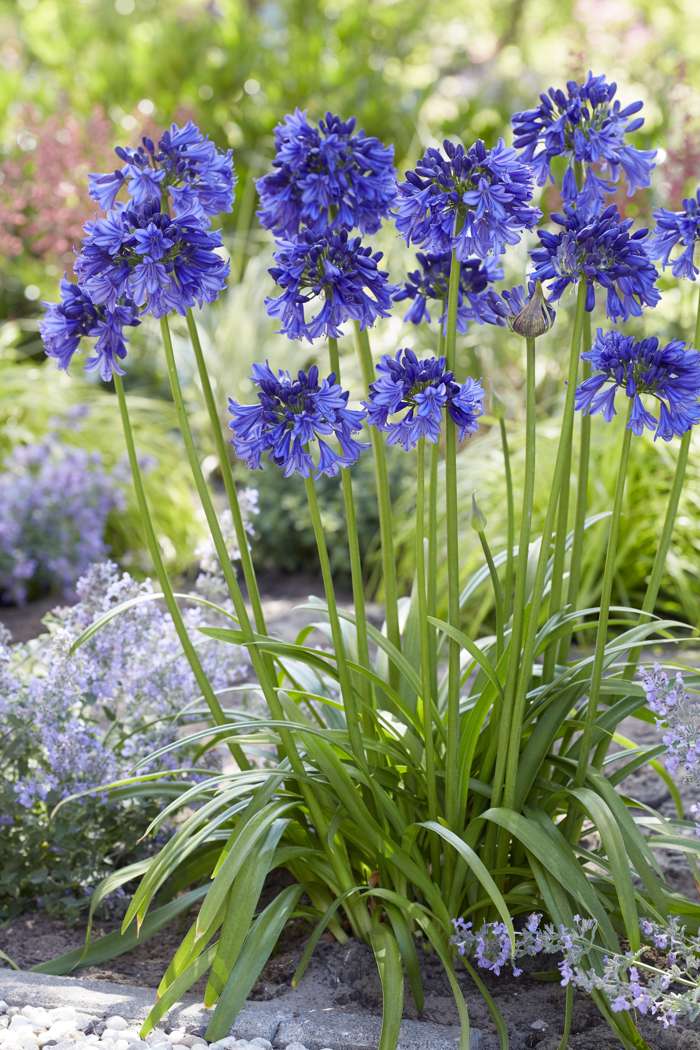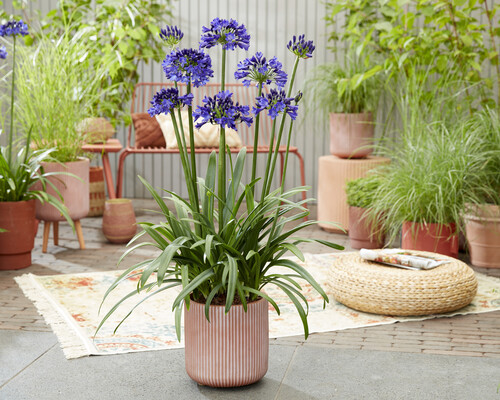Letting Loose the Secret to Successful Agapanthus Growing: Idea for a Flourishing Garden
In the realm of horticulture, growing agapanthus efficiently needs a critical strategy that incorporates different elements of plant care. By recognizing the subtleties of agapanthus growing, one can produce an environment where these plants prosper and flower abundantly.
Growing Agapanthus: Finest Practices
When growing Agapanthus, appropriate dirt prep work is vital for making certain effective development and growth of these gorgeous blossoms. Agapanthus, typically known as Lily of the Nile or African lily, thrives in well-draining soil with a somewhat acidic to neutral pH level - Agapanthus. Prior to growing, it is essential to change hefty clay soils with raw material such as garden compost or peat moss to boost drain and provide essential nutrients for the plants
To plant Agapanthus, choose an area that obtains full sunlight to partial color, as this will certainly advertise healthy and balanced development and plentiful blooming. Dig a hole twice the size of the plant's root round and position the Agapanthus at the same depth it was formerly expanding. Delicately backfill the hole with dirt, weighing down securely to remove any type of air pockets around the roots.
Water the newly planted Agapanthus thoroughly and continue to keep the soil uniformly moist, particularly during the plant's energetic expanding period. Agapanthus. Applying a balanced plant food once a month can further support the plant's development and blooming. By adhering to these best practices for planting Agapanthus, you can develop a stunning display screen of these captivating flowers in your garden
Ideal Soil Issues for Agapanthus
For optimum development and flowering success of Agapanthus plants, making sure the dirt conditions are excellent is crucial. Agapanthus prefers dirt that is rich in nutrients, so including a well balanced fertilizer throughout the growing season can advertise healthy and balanced development and vibrant flowers.

Watering and Feeding Tips
To ensure healthy development and vivid flowers, appropriate watering and fertilizing techniques are important for successful Agapanthus cultivation. Agapanthus plants profit from normal watering, specifically throughout the growing season.
When it pertains to fertilizing Agapanthus, a well balanced fertilizer with equivalent components nitrogen, phosphorus, and potassium can be applied in the spring to promote healthy and balanced development and flowering. Slow-release fertilizers are suitable for giving nutrients slowly over a prolonged period. Stay clear of over-fertilizing, as this can cause extreme foliage development at the cost of flowers.
Furthermore, use this link incorporating natural matter like compost into the soil can boost nutrient levels and improve dirt structure, assisting in the general wellness of the Agapanthus plants. By following these watering and fertilizing ideas, garden enthusiasts can guarantee their Agapanthus plants grow and produce spectacular display screens of flowers.
Trimming and Deadheading Strategies
Appropriate pruning and deadheading strategies play a vital function in keeping the wellness and visual appeals of Agapanthus plants, complementing the crucial techniques of watering and fertilizing for successful farming. Trimming Agapanthus involves removing spent flower heads, dead or yellowing leaves, and total shaping of the plant to promote better growth. Deadheading, the process of getting rid of discolored flowers, not just boosts the plant's look however likewise motivates additional blooming.
When deadheading Agapanthus, it is suggested to trim off the flower stem at the base using sharp, tidy shears. This procedure reroutes the plant's power from seed production back into origin and vegetation growth, advertising a healthier and extra durable plant. Normal deadheading can prolong the flowering period of Agapanthus and avoid self-seeding, which can cause congestion.
In terms of trimming, Agapanthus normally benefits from a light trim after blossoming to clean up the plant and encourage fresh growth. Reducing the spent blossom stems and removing any type of dead or broken foliage aids keep the plant's vigor and total look. However, it is vital to avoid cutting into the crown of the plant, as this can damage its wellness.

Protecting Agapanthus From Pests and Diseases
Carrying out reliable parasite and condition administration methods is essential to protecting the health and vigor of Agapanthus plants in farming. Agapanthus are typically sturdy plants, however they can still succumb numerous parasites and diseases if not appropriately cared for. One usual pest that influences Agapanthus is the Agapanthus borer, a caterpillar that tunnels into the plant, creating damage to the leaves and blossoms. To avoid invasions, routine evaluation of the plants is necessary. If borers are discovered, they you can try these out can be manually removed, or insecticidal soap can be utilized as a control action.
In addition to pests, Agapanthus are at risk to conditions such as origin rot and fungal fallen leave areas. By remaining watchful and attending to bug and illness issues immediately, gardeners can help their Agapanthus flourish and thrive.

Final Thought
In final thought, effective cultivation of agapanthus requires appropriate growing methods, perfect dirt problems, appropriate watering and feeding, regular trimming and deadheading, and security from pests and conditions. By complying with these ideas and tricks, gardeners can make sure a flourishing yard full of attractive agapanthus blooms. Agapanthus. Keep in mind to keep regular care and focus to information to advertise the health and wellness and durability of these stunning plants
When growing Agapanthus, correct dirt prep work is necessary for making sure effective growth and advancement of these stunning flowers.Water the freshly grown Agapanthus thoroughly and proceed to keep the soil equally damp, specifically during the plant's energetic expanding season.For optimum growth and growing success find out this here of Agapanthus plants, ensuring the dirt conditions are excellent is important. When hair transplanting or growing Agapanthus, make certain the dirt is well-prepared to give the needed structure for the plants to establish themselves efficiently. One usual bug that affects Agapanthus is the Agapanthus borer, a caterpillar that tunnels into the plant, triggering damage to the flowers and fallen leaves.